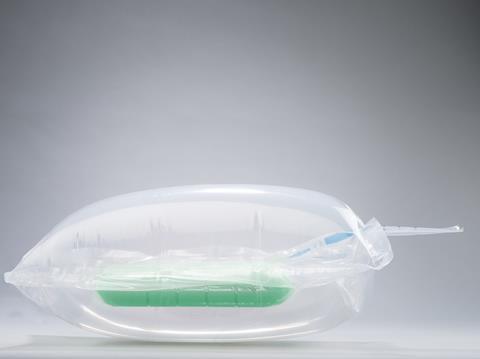
Ross Woodburn - Managing Director, BUBL Packaging, discusses the necessity of protective packaging for goods in transit since the rise of e-commerce.
Everyone knows prevention is better than cure, even if it costs a little more upfront, and this is particularly true when it comes to packaging and delivering goods purchased online; damage inflicted in transit reflects badly upon the seller and leads to loss of reputation (for which read Sales).
And it’s not just the outward journey that’s critical; when goods are returned (for whatever reason) they need to be protected at least as well. Like it or not, companies are judged by their customers’ returns experience.
Estimates vary, but according to the Reverse Logistics Association almost one in every fourteen items purchased online suffers transit damage, and in some categories the rate is much higher; the Citizens Advice Bureau - from a survey of over 2,000 online shoppers in December 2016 – reported that more than one in 10 had received damaged items, a figure very close to that reported by customer service experts StellaService.
But that’s just the tip of the iceberg – to the cost of the replacement add repicking, repacking and reshipping, which costs are typically borne by the retailer/seller. As if this wasn’t enough there are additional fuel costs, adding to the environmental impact; and not to pour that fuel on the fire but in some cases manufacturers/sellers may need to send an engineer to fix a damaged product in situ.
It’s a problem that’s not going away; the explosion in home shopping has seen the number and variety of goods shipped soar; everything from high value technology products to fragile items like antiques or expensive wines are now delivered to businesses, homes and pick up/drop off points, in huge numbers every day - an estimated 95 per cent of the UK public now buys products online.

Ross Woodburn - Managing Director, BUBL Packaging
Over the Top
In mitigation a significant proportion of companies simply assume transit damage is a cost of doing business, factoring the (estimated) cost into their price; but this is simply to admit defeat before even engaging the enemy. Effort spent identifying and measuring the cost components associated with transit - damaged goods will be repaid handsomely in happy, returning customers, reduced costs and (ultimately) improved bottom lines, so it is quite worrying that in another survey only one quarter of respondents said they could quantify the business costs associated with product damage and customer returns.
The obvious conclusion is that traditional packaging solutions (packaging materials, logistics, processes) aren’t fit for purpose; worse, much packaging material is environmentally harmful (it is discarded, is unrecyclable and cannot be reused). The current focus on plastic waste is adding to the pressure on Governments to legislate, a warning sign to the industry that it must act.
If there is a silver bullet that fixes all these problems then it has yet to be loaded and fired, but some categories of emergent solutions are tackling the problem at source – designed around recyclable materials and explicitly for reuse they are additionally helping to reduce costs by shortening packing times and drastically cutting the demand for expensive warehouse storage.
These types of solution have arisen out of a deeper understanding of the end – to - end (and back) process, from picking and packing to returning; by adopting such a holistic approach it is possible to capture the design principles or ‘Golden Rules’ for creating a packaging solution fit for the online shopping revolution that’s still raging.
It’s in the Bag
First things first; a reduction in packaging material consumed – ultimately to just one “component” into which goods are placed, held and protected – makes obvious sense. In most packaging operations there will be multiple components, typically a cardboard box, bubble wrap, void fill, tape and more.
Secondly, and consequently, putting goods into a single “component” is faster, improving productivity.
Thirdly, making that “component” very strong, light and of material that’s reusable and recyclable contributes to solving another challenge; environmental impact.
Finally, and critically, making it possible for that same “component” to become the delivery mechanism for returns – so it must be possible for consumers to re - use it – reduces waste and costs.
Several innovative packaging vendors have emerged to meet these multiple, complex challenges with solutions that are quick and easy to use; the conceptual leap is to protect goods in a secure cushion of air, using inflatable bags made of strong, recyclable material. These can be inflated quickly and easily both at the factory and at home, making for simpler returns.
Because typically several items can be held securely in one package they are also efficient and cost effective, and as all the other packaging components are no longer needed the packing process is hugely simplified.
A further benefit of such inflatable solutions is that they can be stored uninflated, reducing the demand for expensive warehouse space.
Ultimately of course it’s just good business sense to ensure your products are delivered safely – and if this can be achieved whilst reducing costs and protecting the environment then the industry could get over one of its biggest challenges.




















